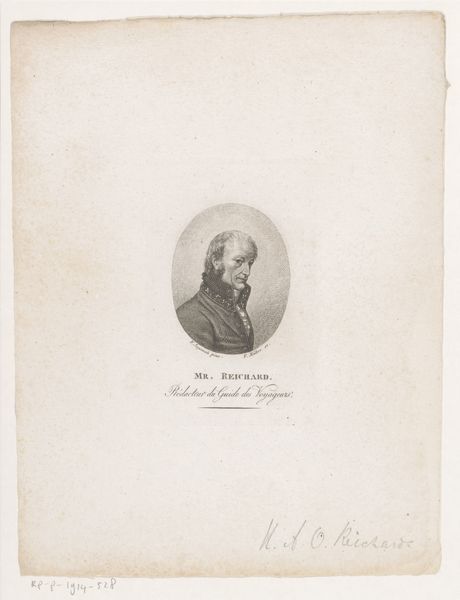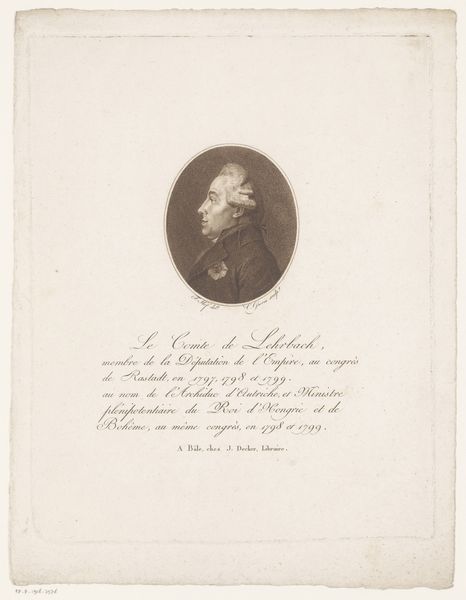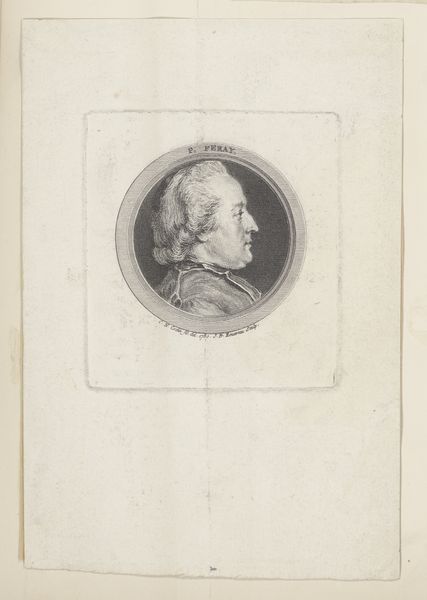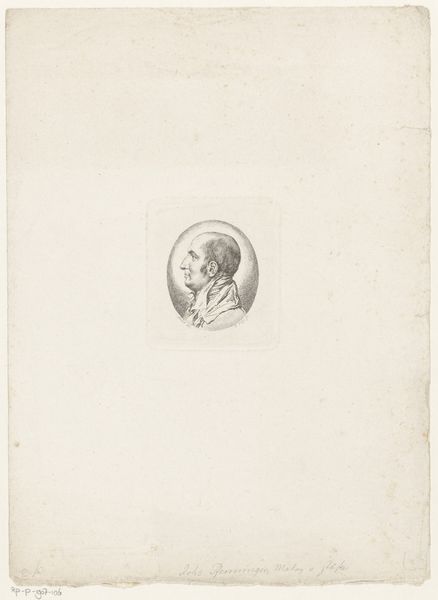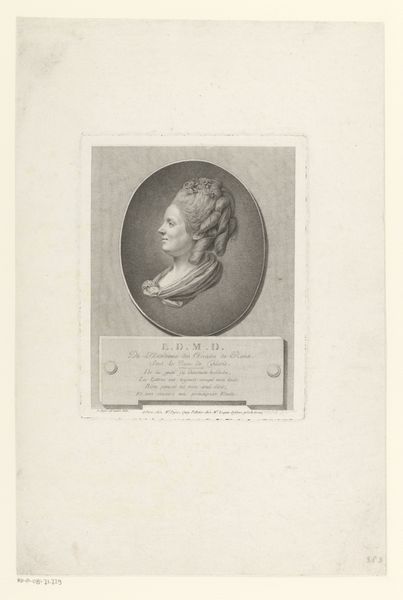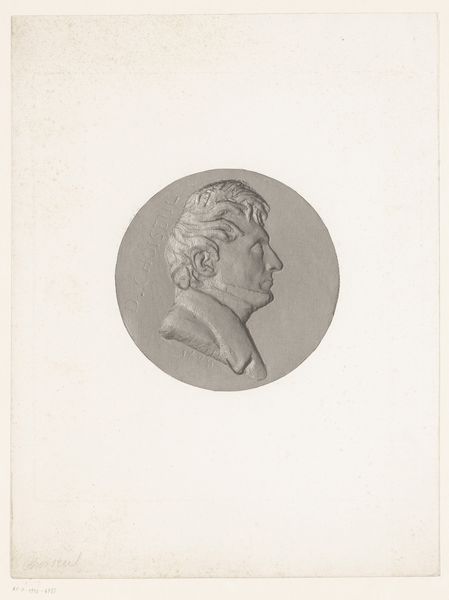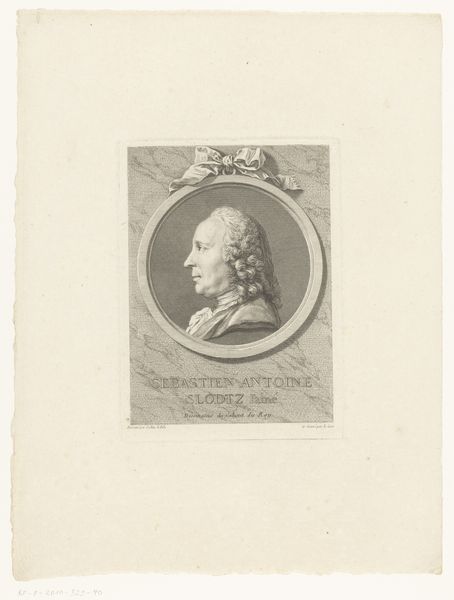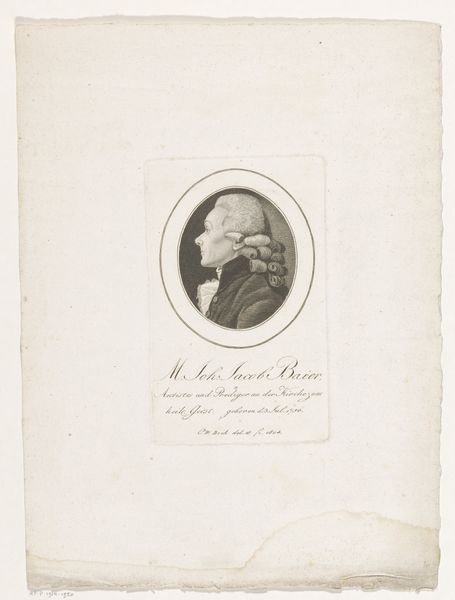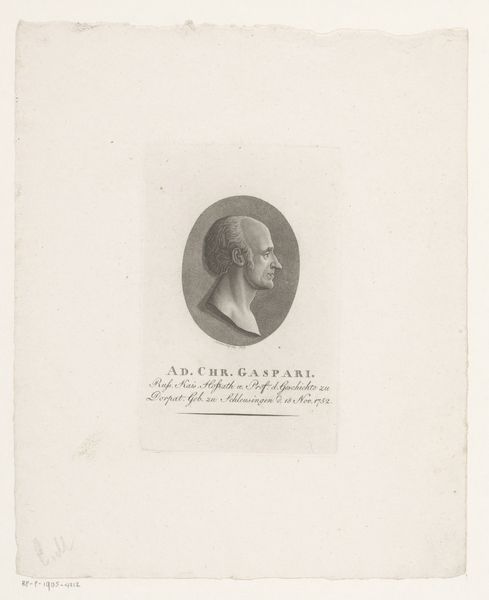
print, engraving
#
portrait
#
neoclacissism
# print
#
history-painting
#
engraving
Dimensions: height 107 mm, width 105 mm
Copyright: Rijks Museum: Open Domain
Curator: This engraving, created in 1799, is a death portrait of Adam Friedrich Oeser. Editor: The small scale and sepia tones create a poignant, almost melancholic atmosphere. It reminds me of ancient coins, how they depict rulers for centuries after they died. Curator: Yes, the work evokes the Neoclassical era's fascination with antiquity and permanence, using the print medium to ensure wider dissemination. Oeser himself was a prominent artist and director of the Leipzig Academy. His artistic choices had a profound impact in his lifetime. Editor: You know, engravings in this era had to be so meticulously crafted. Think about the labor, the precision, to carve those delicate lines into a copper plate to capture the likeness. The material tells its own story of skill and time invested. The scale reminds me of calling cards--like the printing makes Oeser more accessible to the public, rather than being trapped in the art world. Curator: Indeed. Note the idealized profile, so reminiscent of Roman portraiture. The head is presented in a roundel, as if on a medal. Oeser’s profile facing left is likely a conscious reference to classical portraiture traditions, projecting a sense of gravitas. Even death is here made monumental and stoic. It transcends the individual grief. Editor: And printing allowed the proliferation of such symbols. Someone must have painstakingly translated skin tone into variations in hatching density... that in itself makes it so reproducible that the historical figure transcends death. Curator: Looking closer, you might discern subtle nuances of grief or respect conveyed in those precise lines—how each mark contributes to the weight of cultural memory. This is more than just an image; it's an artifact of cultural mourning. Editor: Exactly. It really makes one think about what we choose to preserve, and how the methods of preservation are inextricably linked to its lasting presence. It becomes about the power and possibility inherent in making this reproducible. Curator: A fitting encapsulation. I think we've found that its power resonates centuries later, as well.
Comments
No comments
Be the first to comment and join the conversation on the ultimate creative platform.
